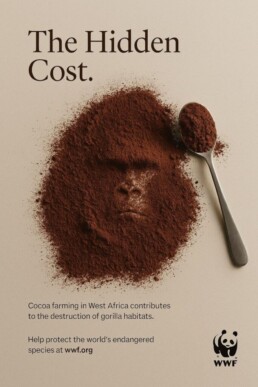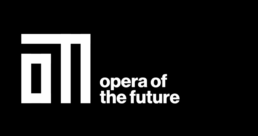Introduction
In a world of digital noise, competitive parity, and limited attention spans, behaviorally intelligent design is no longer a nice-to-have—it’s a strategic advantage. For modern design and product leaders, understanding what drives action is essential to moving both metrics and minds.
Design always carries intention. Whether we realize it or not, every product we ship, campaign we launch, or interface we create is asking someone to do something. It may be to buy, believe, join, act, or simply remember. But it is never passive.
This is true whether you’re designing a mobile app, a public space, a print ad, or a wearable. Design in all its forms is persuasive. It directs attention. It simplifies complexity. It shapes how people feel and what they do next.
When we design with purpose, we become shapers of human behavior. And to do that well, we must look beyond aesthetics and into the psychology of decision-making, the power of systems thinking, and the role of behavioral insights. Great design is not just beautiful—it’s behaviorally intelligent.
Behavior Science Foundations That Drive Design
To design with intention, we must first understand what drives human behavior. One of the most useful models is the Fogg Behavior Model, which states that a behavior only occurs when three elements come together—motivation, ability, and a trigger—at the same time. If any one is missing, the behavior won’t happen.
Designers can use this model as a blueprint:
- Increase motivation with emotional relevance, urgency, and personal identity.
- Increase ability by removing friction and simplifying the path.
- Deliver triggers that prompt action in the exact moment it’s needed.
We also borrow from Choice Architecture and Nudge Theory, which help us shape environments—digital or physical—to guide people toward better outcomes. Rather than forcing action, these methods work by adjusting defaults, highlighting paths, and aligning with familiar cognitive patterns.
But even when people want to act, they don’t always follow through. That’s because behavior is messy—blocked by psychological friction. Below are common barriers that prevent people from taking action:
| Behavior Barrier | Description |
| Procrastination | Tasks feel overwhelming or not urgent (Fogg, Ariely) |
| Inertia / Status Quo Bias | People prefer to do nothing than make a change (Samuelson) |
| Fear of Failure | Fear of making the wrong choice prevents action (Bandura) |
| Choice Overload | Too many options lead to inaction (Schwartz, Iyengar) |
| Cognitive Laziness | People avoid effortful thinking (Kahneman) |
| Social Proof Gap | Lack of social validation creates hesitation (Cialdini) |
| Low Emotional Resonance | People don’t act without emotional connection (Haidt) |
| Ambiguity / Lack of Clarity | Unclear next steps stall progress (Behavioral Econ) |
| Lack of Personal Relevance | Messages are ignored if they don’t feel personal (Petty) |
| Present Bias | Immediate rewards outweigh long-term gains (Ainslie) |
From Theory to Practice
Behavioral insights aren’t just for designers—they’re foundational for any discipline aiming to shape decisions and drive outcomes. Whether you’re creating a mobile app, a public exhibit, a print campaign, or a service experience, behavioral friction can appear in many forms.
Designers can’t drive meaningful behavior change in isolation. It takes a coordinated, cross-disciplinary effort:
- Researchers and strategists uncover human needs, motivations, and context.
- Writers and storytellers craft narratives that evoke emotion and build trust.
- Architects, developers, and makers build the spaces—digital or physical—where behaviors unfold.
- Analysts and observers pinpoint where users hesitate, drop off, or disengage.
When teams align around the goal of shaping behavior—not just delivering features or outputs—design becomes more than a craft. It becomes a tool for influence, impact, and intentional change.
And behavioral friction isn’t limited to digital product flows. It shows up in unentered museum spaces, unread signage, ignored posters, confusing systems, and any environment where people opt out instead of engaging. When we address these moments with behavioral intelligence, we stop pushing against human nature—and start designing with it.
That’s the real business—and societal—case for purposeful, behaviorally informed design.
Design Strategies That Shape Behavior
So how do we translate behavioral theory into design practice?
We create solutions that either:
- Increase motivation by connecting to emotion, urgency, or identity
- Increase ability by simplifying the task and reducing friction
Below is a matrix pairing common behavioral barriers with effective design tactics drawn from real-world products and experiences:
| Behavior Barrier | Design Tactic |
| Procrastination | Break tasks into small steps; show progress indicators (Duolingo) |
| Inertia / Status Quo Bias | Use smart defaults; emphasize easy onboarding (Nike Fit) |
| Fear of Failure | Build trust with reassuring microcopy and soft onboarding |
| Choice Overload | Curate options and apply clear visual hierarchy (Airbnb) |
| Cognitive Laziness | Use bold, simple visuals; minimize text (WWF) |
| Social Proof Gap | Highlight community participation; show peer action (Peloton) |
| Low Emotional Resonance | Tell stories with emotional weight; use meaningful imagery (WWF) |
| Ambiguity / Lack of Clarity | Use structured flows, clear CTAs, and visual steps (Duolingo) |
| Lack of Personal Relevance | Personalize content and interactions (Headspace, Nike Fit) |
| Present Bias | Provide immediate feedback or short-term wins (Headspace, Duolingo) |
Case Studies
Real-world examples bring behavior design to life. Below are four case studies that show how teams translated behavioral insight into action. These examples span digital products, environmental branding, and advocacy communications—but they all share a common trait: they design for behavior first, then wrap the experience in clarity and emotional resonance.
WWF – “The Hidden Cost”
Challenge:
Emotional detachment from environmental issues.
Behavioral Lever:
Emotional storytelling to drive belief.
Design Tactic:
Used metaphor and simplicity to make abstract problems feel urgent and personally relevant.
Credit: Nikolaj Lykke Viborg, WWF (Denmark)

Headspace – Gamified Meditation Learning
Barrier to Overcome:
Inertia, present bias, lack of time.
Behavior Lever:
Act and remember.
Design Tactic:
Set a weekly goal during sign up, personalized daily nudges, visual streaks and badges for momentum.


Nike Fit – AR Sizing Experience
Challenge:
Inertia and fear of buying the wrong size online.
Behavioral Lever:
Trust-building through simplicity.
Design Response:
Deployed an AR scan and clean, minimal UI to reduce friction and instill purchase confidence.

MIT Media Lab Identity
Challenge:
Lack of shared identity across decentralized teams.
Behavioral Lever:
Visual cohesion combined with team individuality.
Design Tactic:
Created a grid-based generative identity system that balanced consistency with creative expression.



What Designers Could Practice to Drive Real Change
As the design discipline matures, behavioral design is becoming a core competency—not a niche specialization. Designers must evolve from visual stylists into behavior architects—strategists who apply the principles of psychology, communication, and systems thinking to influence real-world outcomes.
Here are some principles I’ve shared with teams to embed behaviorally intelligent thinking into their work:
- Frame problems with clarity. Step back and ask: Why aren’t people acting? What barriers are in their way?
- Challenge assumptions. Be relentlessly curious: What are we assuming to be true—and why?
- Use evidence and context. Observe behavior. Look for mismatches between intention and action.
- Design for clarity and emotion. Tell precise stories. Reduce cognitive load. Use hierarchy to guide the eye and the mind.
To build this muscle, teams—and design education itself—must strengthen key capabilities:
- Problem framing and discovery techniques
- Visual and verbal tactics to influence behavior
- Storytelling for persuasion and emotional resonance
- Deep understanding of psychological friction
- Exploration of adaptive and AI-powered tools
- Ongoing exposure to real-world case studies across industries
Whether you’re a designer, product leader, or strategist, use this simple lens:
Is this design asking me to do something?
If so, is it making that easier, more meaningful, or more motivating?
That’s the kind of design we need more of—design that respects human nature, removes unnecessary barriers, and empowers people to act with confidence and clarity.
In closing…
Every design expression is an invitation—to act, to belong, to become.It’s how we guide, include, and inspire others through the experiences we shape. In every medium, from interface to environment, our choices ripple outward. When we design with empathy and purpose, we do more than solve problems—we shape minds, move hearts, and inspire behavior change.
The future of design belongs to those who lead with curiosity, center humanity, and bring others along for the journey.
Credits
-
Dr. BJ Fogg – The Fogg Behavior Model (Stanford Behavior Design Lab)
-
Richard Thaler & Cass Sunstein – Nudge Theory & Choice Architecture
-
Daniel Kahneman – Thinking, Fast and Slow (System 1 and 2 cognitive frameworks)
-
Dan Ariely – Predictably Irrational
-
Albert Bandura – Self-Efficacy Theory
-
Jonathan Haidt – The Righteous Mind
-
Sheena Iyengar & Barry Schwartz – Choice Overload research
-
Cialdini’s Principles of Persuasion – particularly social proof and authority
Case Studies
-
Duolingo – Gamified learning experience featuring streaks, badges, and habit formation.
-
Nike Fit – Sources: Nike’s internal Digital Product Team and Invertex acquisition.
-
Headspace – Habit formation through pre-commitment onboarding and visual progress tracking.
-
Pentagram x MIT Media Lab – Creative direction by Pentagram Partner Michael Bierut
-
WWF – “The Hidden Cost” Campaign, Designer: Nikolaj Lykke Viborg


